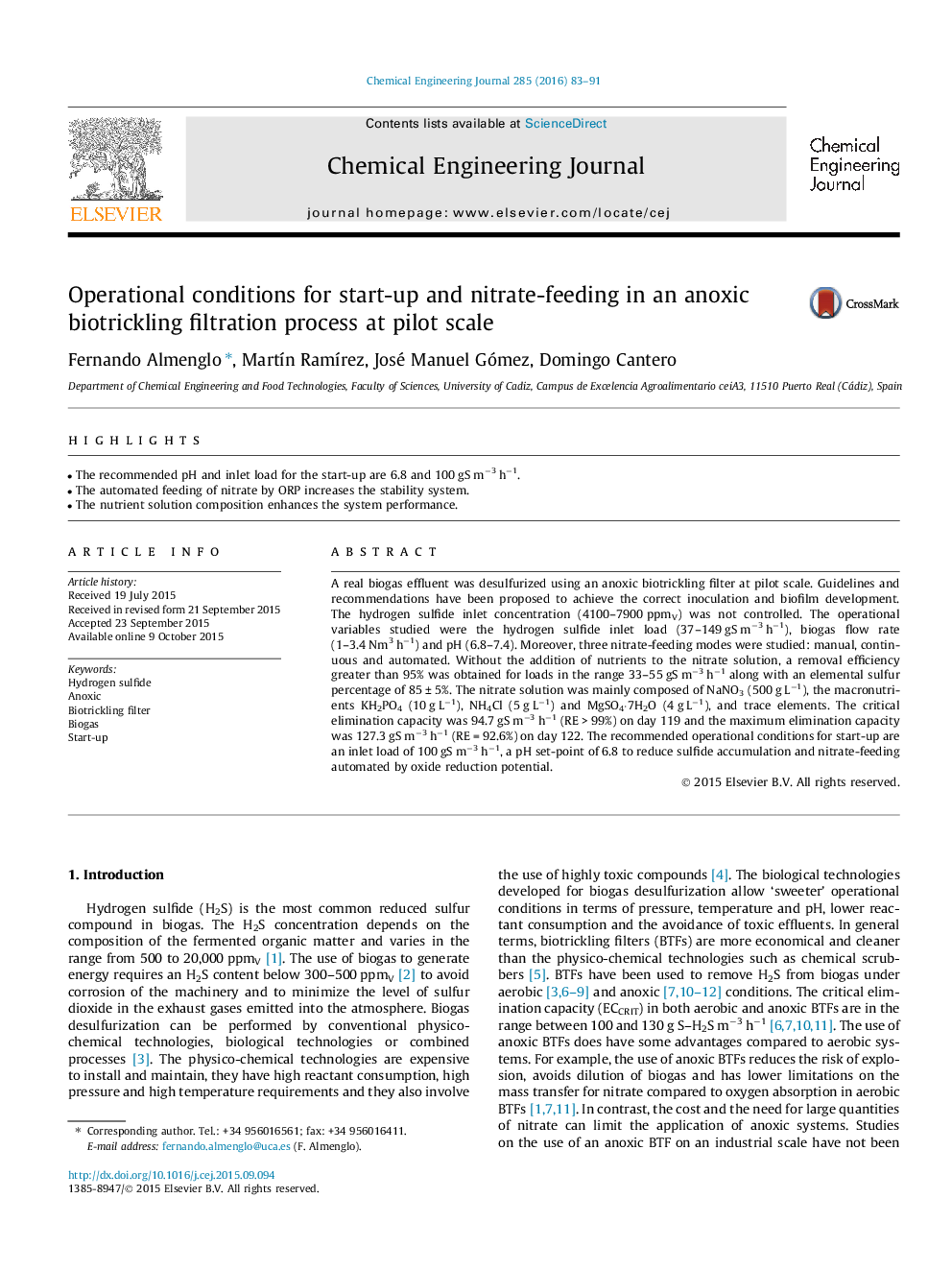| Article ID | Journal | Published Year | Pages | File Type |
|---|---|---|---|---|
| 6583038 | Chemical Engineering Journal | 2016 | 9 Pages |
Abstract
A real biogas effluent was desulfurized using an anoxic biotrickling filter at pilot scale. Guidelines and recommendations have been proposed to achieve the correct inoculation and biofilm development. The hydrogen sulfide inlet concentration (4100-7900 ppmV) was not controlled. The operational variables studied were the hydrogen sulfide inlet load (37-149 gS mâ3 hâ1), biogas flow rate (1-3.4 Nm3 hâ1) and pH (6.8-7.4). Moreover, three nitrate-feeding modes were studied: manual, continuous and automated. Without the addition of nutrients to the nitrate solution, a removal efficiency greater than 95% was obtained for loads in the range 33-55 gS mâ3 hâ1 along with an elemental sulfur percentage of 85 ± 5%. The nitrate solution was mainly composed of NaNO3 (500 g Lâ1), the macronutrients KH2PO4 (10 g Lâ1), NH4Cl (5 g Lâ1) and MgSO4·7H2O (4 g Lâ1), and trace elements. The critical elimination capacity was 94.7 gS mâ3 hâ1 (RE > 99%) on day 119 and the maximum elimination capacity was 127.3 gS mâ3 hâ1 (RE = 92.6%) on day 122. The recommended operational conditions for start-up are an inlet load of 100 gS mâ3 hâ1, a pH set-point of 6.8 to reduce sulfide accumulation and nitrate-feeding automated by oxide reduction potential.
Related Topics
Physical Sciences and Engineering
Chemical Engineering
Chemical Engineering (General)
Authors
Fernando Almenglo, MartÃn RamÃrez, José Manuel Gómez, Domingo Cantero,
